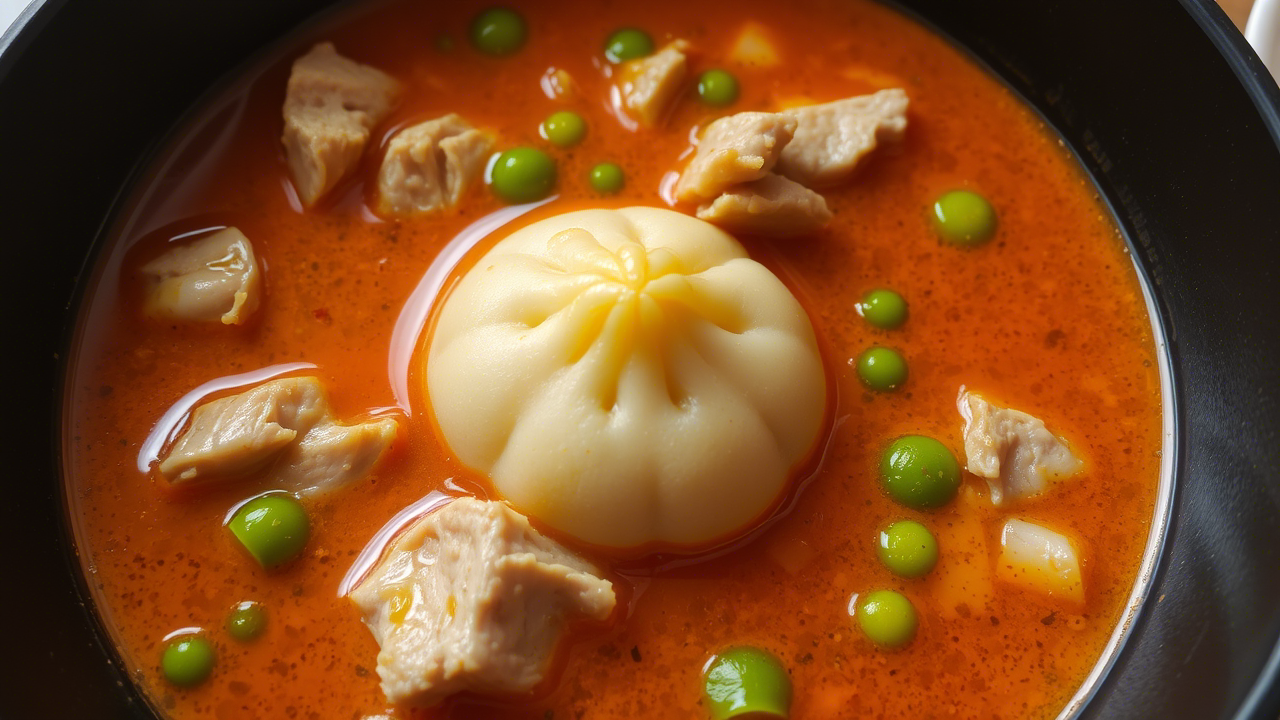Konkonte is a traditional Ghanaian dish made from dried cassava flour, typically served with a variety of thick soups and stews. Sometimes affectionately called “Lafu” or “Face the Wall” (a nickname from colonial times when students shyly turned away while eating it), Konkonte is a meal that speaks to the ingenuity and resourcefulness of West African food culture.
Historical and Cultural Significance
Cassava was introduced to West Africa from South America centuries ago and quickly became a vital crop due to its drought resistance and carbohydrate-rich roots. In Ghana, cassava is not only a major agricultural product but a central part of the daily diet.
Konkonte has its roots in rural communities, where preservation of food is key. Drying cassava into flour ensured food security during lean seasons. The dish was once considered a "poor man’s food," but today it is proudly embraced across all social classes, especially among the Akan, Ewe, and Ga communities.
Ingredients and Preparation
The preparation of Konkonte is straightforward but requires finesse:
Cassava flour: Made by peeling, slicing, drying, and grinding cassava roots. The flour can be white or brown depending on the drying process.
Water: Used to mix and cook the flour into a smooth, dough-like consistency.
To prepare, water is brought to a boil in a pot. Cassava flour is gradually stirred in, often with a wooden paddle called a “banku stick,” until the mixture thickens into a stretchy, smooth dough. It is similar in texture to other West African starches like banku, eba, or fufu.
Pairing with Soups and Stews
Konkonte is typically served with a variety of rich, flavorful soups. Some of the most common include:
Groundnut (peanut) soup
Palm nut soup
Light soup (tomato-based)
Green okra soup
Goat meat or fish stew
The subtle flavor of Konkonte allows it to soak up the richness of the accompanying soup, making every bite satisfying.
Nutritional Profile
Cassava flour is gluten-free and high in carbohydrates, offering quick energy. However, it is low in protein and micronutrients unless paired with nutrient-dense soups. When combined with fish or meat stews, leafy greens, and local spices, it becomes a more balanced meal.
Sociocultural Importance
Although once looked down upon, Konkonte has undergone a culinary revival in Ghana. With the rise of cultural pride and local food movements, chefs and home cooks are reintroducing it in modern and upscale settings. It's also gaining attention for its gluten-free quality, making it appealing to health-conscious eaters and people with dietary restrictions.
Konkonte is often served during communal meals and traditional ceremonies. In some regions, it is used in funeral or ancestral rites as a symbolic offering of sustenance to the departed.
Modern Adaptations
In urban areas, instant konkonte flour has made preparation easier. Some restaurants offer it with modern touches like grilled fish fillets or gourmet sauces. Food bloggers are documenting its preparation and cultural significance, helping to preserve and promote it for younger generations.
Culinary Identity
Konkonte may not be as internationally known as jollof rice or fufu, but it represents the core of Ghanaian culinary identity—resilient, versatile, and deeply rooted in local traditions. Its return to favor is a celebration of indigenous knowledge and the wisdom of our ancestors who knew how to turn humble roots into soul food.


